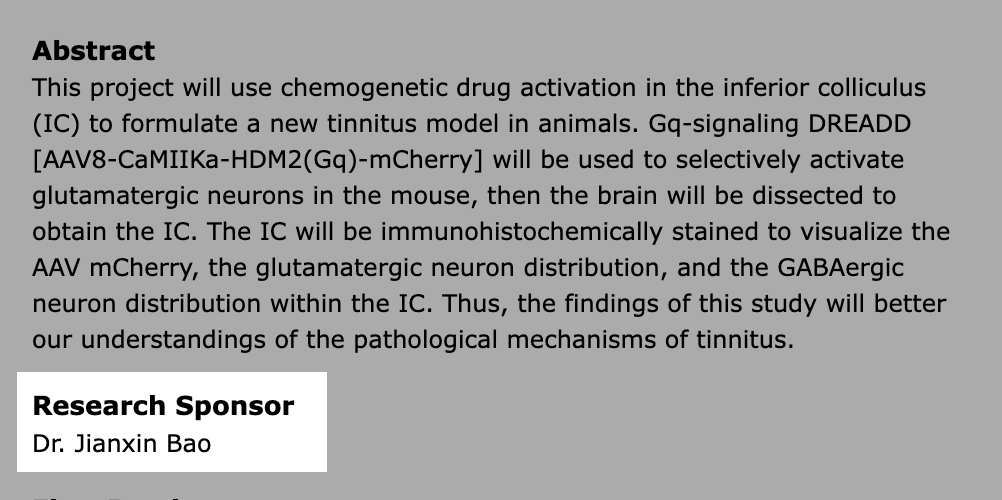Selective chemogenetic modulation of IC excitatory neurons could lead to a reliable and efficient tinnitus model for targeted drug studies…
The following information was obtained from a Dissertation/Thesis titled, “Chemogenetic Induced Tinnitus Model “, that was recently uploaded to the institutional repository of The University of Akron in Akron, Ohio, USA. (Date of last revision: May 11, 2022. Date accessed: June 12, 2022.)

This article is an early access draft.
It is meant for newsletter subscribers and its purpose is to draw attention to a new topic in the realm of tinnitus treatments: chemogenetic modulation. It is also meant to highlight the commendable work of the author… and, lastly, provide readers with a heads up about an upcoming NEOMED (Jianxin Bao?) manuscript.
From the opening paragraph:
Some results of this study are sensitive, and will be included in a NEOMED-published manuscript later this year […]
From the project abstract:
This project will use chemogenetic drug activation in the inferior colliculus (IC) to formulate a new tinnitus model in animals. Gq-signaling DREADD [AAV8-CaMIIKa-HDM2(Gq)-mCherry] will be used to selectively activate glutamatergic neurons in the mouse […] the findings of this study will better our understandings of the pathological mechanisms of tinnitus.
People involved: Jianxin Bao is the Research Sponsor. (Expect his name to be associated with the manuscript and the full story, when it comes out later this year. Details pending.)
Towards chemogenetic silencing of tinnitus?
Recently, neuronal activity can be controlled by designer receptors exclusively activated by designer drugs (DREADD) (Roth). These DREADDs use G protein-led receptors that respond exclusively to Clozapine N-oxide (CNO), a modified chemical compound from an antipsychotic drug. Here, I applied this chemogenetic method to activate IC excitatory neurons, and determine that this activation could lead to a reliable and efficient tinnitus model for future translational studies.
These findings emphasize that further research using chemogenetics is necessary in the field of IC excitatory neuron research, allowing cell-specific modulation and defining its function in brain excitability and confirming its role in the mechanism of action of tinnitus.
Citation
Bunner, Cara, “Chemogenetic Induced Tinnitus Model” (2022). Williams Honors College, Honors Research Projects. 1593.
https://ideaexchange.uakron.edu/honors_research_projects/1593
For email updates about chemogenetic modulation of tinnitus (sometimes referred to as “Chemogemod” or, more casually, “Lechemogenire” … /s) … subscribe to the free email newsletter.
RE: donations
To readers and subscribers who have periodically asked how they can help expand and expedite the coverage of tinnitus treatment and research updates on this website: donate here.